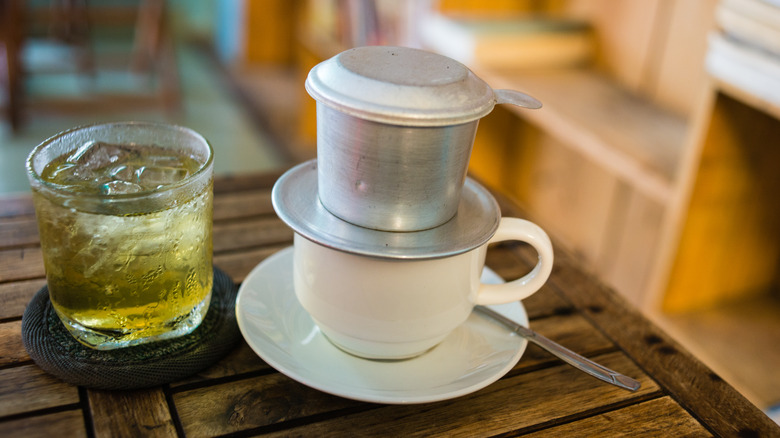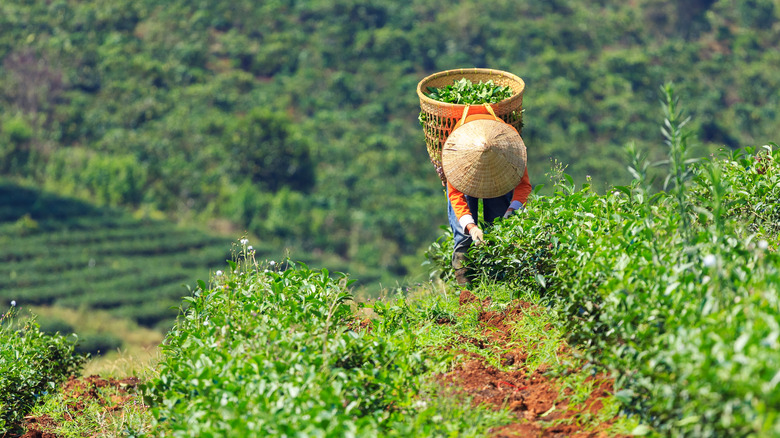The Age-Old Ritual Behind Drinking Vietnamese Tea
From Hanoi to Ho Chi Minh City, when foodies hear "Vietnamese," they're likely conjuring images of steaming pho or sizzling shaking beef. Today, we're exploring another side of Vietnam's epicure landscape: Tea. In many cultures, including Vietnam, there's an age-old ritual behind drinking tea, and it's both a process and an event — although not always necessarily at the same time.
Vietnamese tea is commonly served in teacups called wen xiang bei, which are outfitted with longer, thinner cups that act as "lids" for capturing the fragrance. Slowly pull the lid upward, then deeply inhale the tea to catch the aromas and prime the palate for tasting. Then, introduce a little aeration to the lid by swirling it in a circular motion, then inhale deeply once more and note how the aroma has changed. Finally, sip the tea from the lower part of the cup, spreading it across the entire tongue.
In Vietnam, it's also customary for weddings to begin with a designated tea ceremony called Đám Hỏi or Ăn Hỏi, which is held one month or one week before the actual wedding day to welcome a prosperous married life. In this case, the tea ceremony is an actual event rather than a method of serving tea. It's held by the bride's family, the groom's family prepares dowry gifts, and everyone wears brightly colored traditional outfits called Áo Dài. The soon-to-be-wed couple serves their extended families, handing each person a cup of tea as a symbol of gratitude.
Past meets present, and ritual persists
Per the lore, the longstanding tradition of tea drinking in Vietnam was cemented during the 13th through 15th centuries. During this time, tea drinking was often coupled with reading a book, as the practice was believed to enhance a person's character and nurture inner peacefulness. Vietnam is home to a myriad of esteemed tea-cultivating regions like the Lam Dong highlands, each with their own expertly crafted varieties. The country is also home to a lavish coffee culture, especially bạc xỉu, but that's a story for another time.
Today, tea drinking is an essential aspect of daily life and culture in Vietnam. It's all about the appreciation of high-quality tea, deliberately slowing down, and employing holistic medicine to stimulate health and relaxation. Tea also carries major symbolic significance as a way to connect socially, demonstrating hospitality and respect to others. In addition to enjoying tea at home, many folks in Vietnam swing by street vendors called quán cóc for hot or iced green tea, often paired with peanut candies and cigarettes. Younger sippers in Hanoi have been taking to other tea joints with low plastic stools (not unlike the ones Anthony Bourdain and Obama once dined on) to meet with friends and enjoy trendy trà chanh, a fresh lime tea (don't forget the dishes of roasted sunflower seeds).

